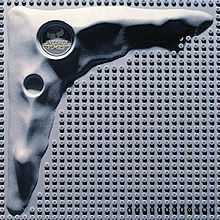6 Underground
| "6 Underground" | |||||||
|---|---|---|---|---|---|---|---|
 | |||||||
| Single by Sneaker Pimps | |||||||
| from the album Becoming X | |||||||
| A-side | "6 Underground" | ||||||
| B-side | "Can't Find My Way Home" | ||||||
| Released | 7 October 1996 (UK)[1] | ||||||
| Format | CD, 12" | ||||||
| Recorded | 1996 | ||||||
| Genre | Trip hop, Downtempo | ||||||
| Length | 3:54 | ||||||
| Label | Clean Up | ||||||
| Sneaker Pimps singles chronology | |||||||
| |||||||
| |||||||
"6 Underground" is a song by the English band Sneaker Pimps, from their 1996 studio album Becoming X.
First released as a single in the United Kingdom in October 1996, the song reached number 15 on the UK Singles Chart[2] and had moderate radio airplay in the United States. After the song was used in the 1997 American film The Saint, radio stations began playing it more frequently; many stations continue to keep the song in their playlists. The single was re-released in the UK in May 1997, where it reached number 9 on the UK Singles Chart.[3] In the United States, the song peaked at number 45 on the Billboard Hot 100.
Originally, the song was a club hit in the UK. After the commercial success and popularity of the album version of the song, the group released several remixes, some of which became hits in dance clubs and radio stations with a dance format. The version most frequently heard on radio was the remix by Nellee Hooper (which appeared as a hidden track on the album).
The harp melody at the beginning of the song is a sample from "Golden Girl", a song from the 1964 James Bond film Goldfinger (the song plays during a scene when Bond discovers Jill Masterson covered in gold paint).
Music video
The music video for the song, directed by Toby Tremlett, gives off a dark atmosphere. Throughout the video, the camera focuses on Kelli Dayton singing in the middle of a dark room sitting in a dentist chair that she spins around. The camera follows Dayton as she slowly walks around the darkened room singing the song. There are also several smaller lit rooms within the larger dark room, depicting different scenes such as a man dressed in black practicing various poses, a woman dressed in a nightgown who is vacuuming the floor, a young woman posing around a chair in a red tie shirt and black skirt, a toddler dressed in a costume tossing Halloween candy and an overweight man eating spaghetti while sitting in a recliner. The other band members are usually seen lurking behind Dayton in this video, including in some scenes where the band is standing in one of the small, brightly lit rooms. At the end of the video, the people in the smaller rooms seem to freeze in place, and in the big room, the band poses at Dayton's dentist chair, and then the lights go out. The video uses the Nellee Hooper edit of the song. Laura Prepon of That '70s Show was also featured in the video.
Artwork
The cover artwork of the 1996 single uses a photograph of a Lego Space moonscape. The piece is from the Command Centre playset marketed by The Lego Group from 1978 to 1988.
In film, television and radio
The song has been featured in many films:
- The Saint, just before the sensual scene
- The Watcher, in a camera store when David Allen Griffin (Keanu Reeves) is seducing his next victim, an employee of the store
- Can't Hardly Wait, upon the entrance of Jennifer Love Hewitt's character Amanda Beckett to the party that makes up the core of the film
- A Man Apart
- Cruel Intentions
- Dogtown and Z-Boys, in the segment about Pacific Ocean Park pier
- Ghosts of Girlfriends Past, when Matthew McConaughey has long hair in the bar.
It has appeared in a number of TV shows too: it was the opening theme song of the short-lived television series Titans, during the opening credits of episode #221 "Friends in Deed" of Beverly Hills, 90210, during the Daria episode "The Invitation", and on promos for The History Channel's new series, Cities of the Underworld, during the episode "Tess, Lies and Videotape" of Roswell, as well as the FX series Over There. The song plays in the background in the British sitcom Game On, where Mathew Malone seduces a teddy bear.
In 1998, the song formed part of the soundtrack for the first episode of the second series of Chris Morris's radio programme Blue Jam.
References
- ↑ "6 Underground". Juno Records. Retrieved 3 March 2011.
- ↑ "The Sneaker Pimps - Six Underground". Chart Stats. Retrieved 3 March 2011.
- ↑ "The Sneaker Pimps - Six Underground {1997}". Chart Stats. Retrieved 3 March 2011.